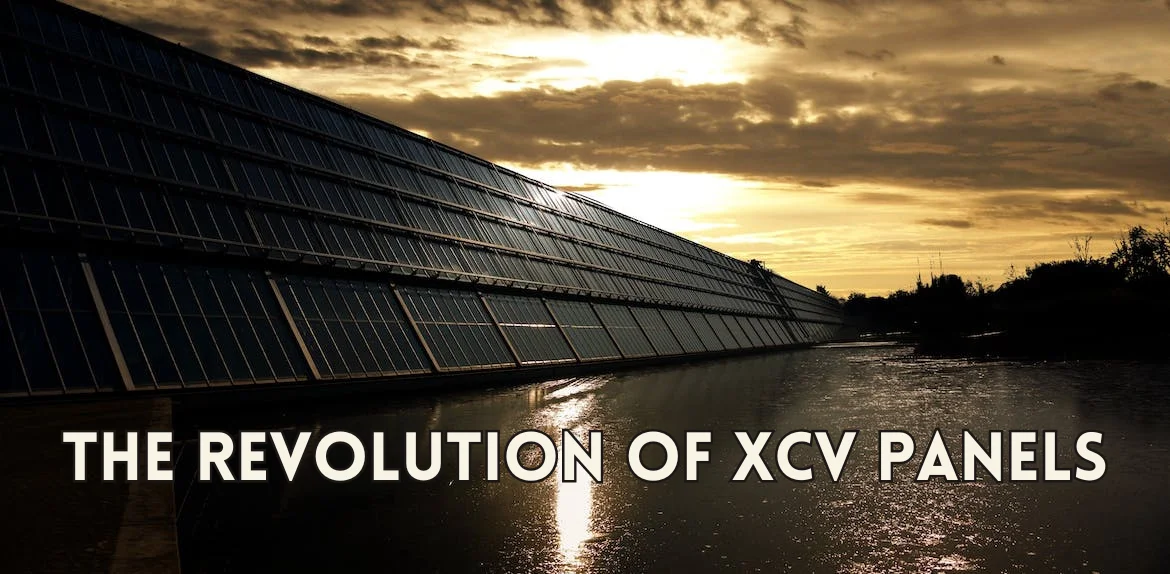In the ever-growing quest for sustainable energy sources, the innovation of XCV Panels, or Extremely Conductive and Versatile Panels, emerges as a beacon of hope. These solar panels represent a groundbreaking technology designed to harness the power of sunlight, addressing the challenges posed by depleting natural resources and the escalating demands for electricity.
What is the XCV Panel?
XCV Panel, short for Extremely Conductive and Versatile Panel, is a type of solar panel comprised of small interconnected photoelectric cells. These cells efficiently convert sunlight into electricity, offering an eco-friendly and cost-effective alternative to traditional energy sources. The electricity generated can either power devices directly or be stored in batteries for later use.
How Does the XCV Panel Work?
Constructed with highly conductive materials, XCV Panels capture sunlight effectively. Photocells within the panels absorb light, converting it into electrical electrons that flow through the panels and can be stored in batteries as alternative current. This stored energy serves as a reliable source for powering daily devices.
Advantages of XCV Panels Over Traditional Solar Panels
- Increased Efficiency: XCV Panels outperform traditional solar panels in terms of efficiency.
- Lightweight Design: They are lighter in weight, facilitating easier transportation and installation.
- Extended Warranty: With a 25-year warranty, XCV Panels boast longevity, ensuring a lifetime of reliable performance.
- Easy Installation: The fitting procedure is simple, making installation more accessible than traditional solar panels.
- Flexibility: Their flexibility allows them to be installed in various locations, offering versatility in applications.
- Appealing Design: XCV Panels exhibit a sleek design, adding an aesthetic touch to their functionality.
- Commercial Use: Ideal for powering commercial establishments efficiently.
Applications of XCV Panels
XCV Panels find widespread applications due to their efficiency, affordability, longevity, and design. Some key applications include:
- Home Power: XCV Panels are utilized in homes to meet electricity needs affordably.
- Commercial Buildings: Installed on the roofs of commercial buildings, XCV Panels provide electricity for multiple residents.
- Industries: Used to power satellites and space stations, offering a long-term energy source.
- Vehicles: XCV Panels are installed in electric cars, providing a source of recharge when needed.
Types of XCV Panels
There are various types of XCV Panels, including Standard, Enhanced, and Premium, each with distinct features catering to different needs.
Installation Guide
Installing XCV Panels is a straightforward process:
- Gather tools like a drill, screwdriver, and wrench.
- If replacing old panels, remove them with a screwdriver.
- Use a drill to create holes for the XCV Panels.
- Secure the panels in place with a screwdriver.
- Professional installers are recommended for optimal placement.
Safety Measures
- Regularly clean panels to remove dust and debris.
- Periodically check circuit breakers and essential components to prevent potential issues.
Choosing the Right XCV Panel
Consider mono crystalline panels for higher effectiveness, factor in the installation location, and ensure the panels come with a warranty.
Drawbacks of XCV Panels
- High upfront cost.
- Dependence on sunlight.
- Performance degradation over time.
- Fragility, susceptible to weather-related damage.
- Regular maintenance required for optimal efficiency.
Research Centers for XCV Panel Development
Leading research institutions such as The Scientific Academy (China), The University of Oxford (United Kingdom), and NREL (The United States National Renewable Energy Laboratory) are actively contributing to the improvement and development of XCV Panel technology.
Is XCV Panel Right for You?
XCV Panels are an ideal choice if you seek an affordable, renewable energy source with a long-lasting warranty. Their environmental friendliness, coupled with wide-ranging applications in residential, commercial, and industrial settings, makes them a compelling option.
Future of XCV Panel
Researchers are continually working towards enhancing XCV Panels by increasing efficiency and making them more affordable, ensuring broader accessibility.
FAQs (Frequently Asked Questions)
What is an XCV Panel?
XCV Panel stands for Extremely Conductive and Versatile Panel, a type of solar panel known for its efficiency in converting sunlight into electricity.
Which type of XCV Panel is best?
Choosing mono crystalline panels is recommended for higher effectiveness, but polycrystalline panels are a good alternative if budget constraints exist.
How to troubleshoot the XCV Panel?
Check the circuit breaker and fuse regularly, replacing them if necessary.
How to install an XCV Panel?
Follow a simple installation process using a drill, screwdriver, and wrench. Consider professional installers for optimal placement.
Conclusion
XCV Panels, with their Extremely Conductive and Versatile nature, mark a significant stride in the renewable energy landscape. From their historical evolution to the present advancements and future prospects, these panels offer a promising solution to the growing energy needs while minimizing environmental impact. Embrace the revolution of XCV Panels for a sustainable and efficient energy future.





